Abstract
1 Effect of diazepam (5 and 10 mg) and temazepam (10, 20 and 30 mg) on the sleep of six healthy middle aged (45-55 years) males was studied using electroencephalography for sleep measures, and analogue scales for subjective assessments of well being and sleep quality.
2 In placebo studies the sleep of the group was compared with that of young adults (20-29 years). In the older group there was a marked reduction in total sleep time (P < 0.01), an increase in latency to stage 3 sleep (P < 0.01), and an increase in percentage of stage 1 (drowsy) and stage 2 sleep (P < 0.05 and 0.001 respectively). There were no changes in percentage or latency of rapid eye movement sleep.
3 With the middle aged group there was no increase in total sleep time with diazepam and temazepam. Sleep onset latencies were shortened by 5 and 10 mg diazepam (P < 0.05), but there was no change with temazepam. Number of awakenings was reduced by 30 mg temazepam (P < 0.01), and the duration of awakenings was reduced by 5 and 10 mg diazepam (P < 0.05) and by 20 and 30 mg temazepam (P < 0.01). Awake activity was reduced by 5 and 10 mg diazepam (P < 0.001) and by 10 mg (P < 0.05) and 20 and 30 mg (P < 0.001) temazepam. The subjects assessed their sleep as improved with diazepam and with temazepam without residual effects on well-being.
4 Though the effect of diazepam (5-10 mg) and temazepam (10-20 mg) may not be so pronounced as that of other hypnotics, they are likely to be useful over an age range which includes, at least, young adulthood and late middle age. A particular advantage of these drugs is that within these dose ranges they are without residual effects on performance.
Full text
PDF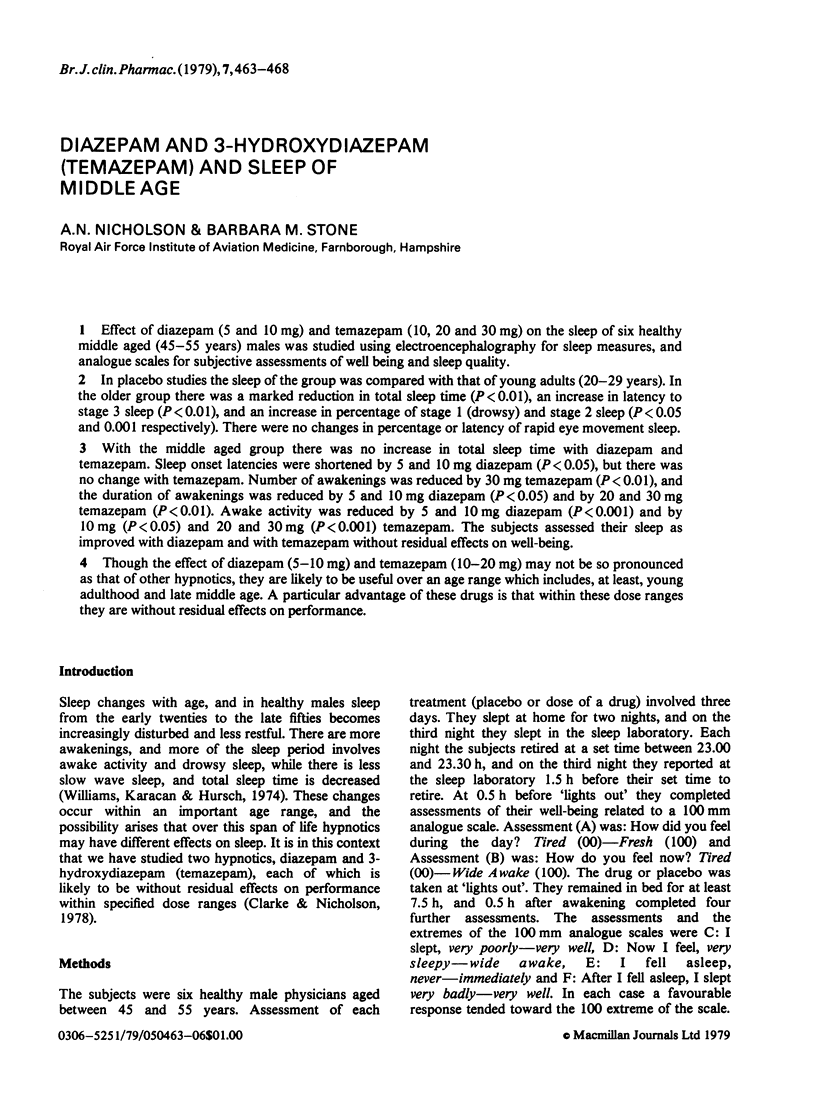
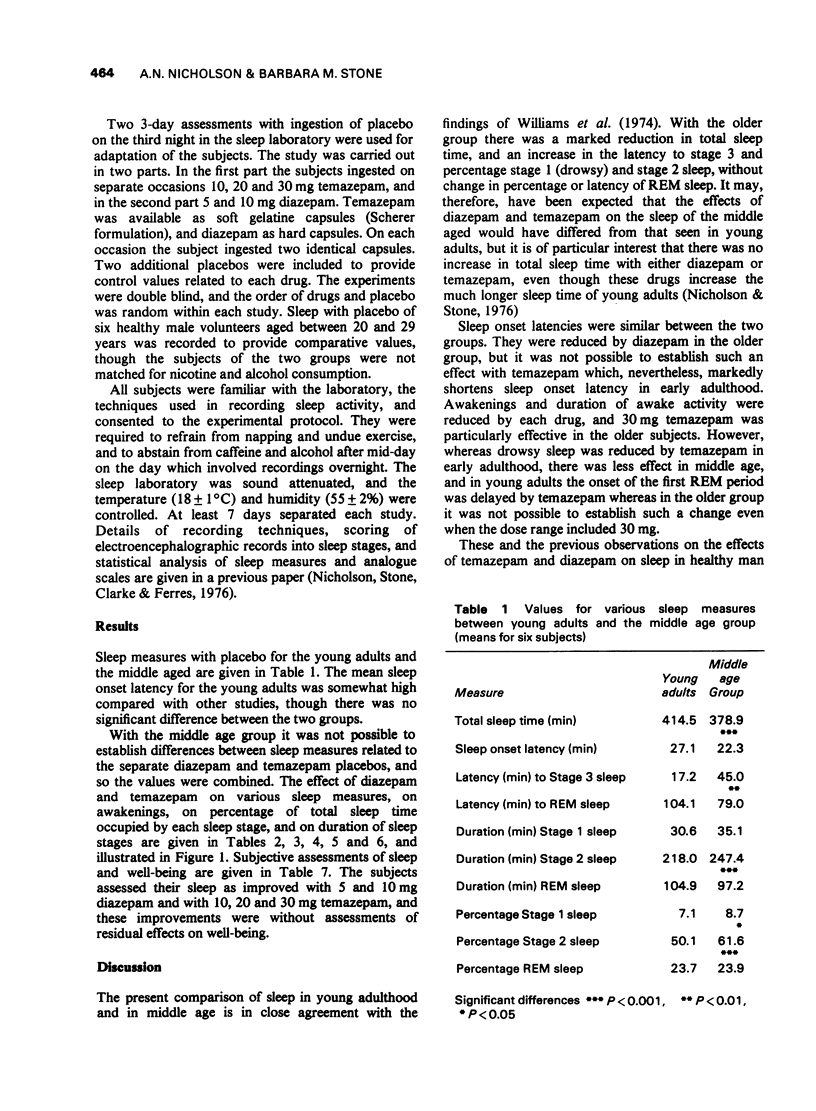
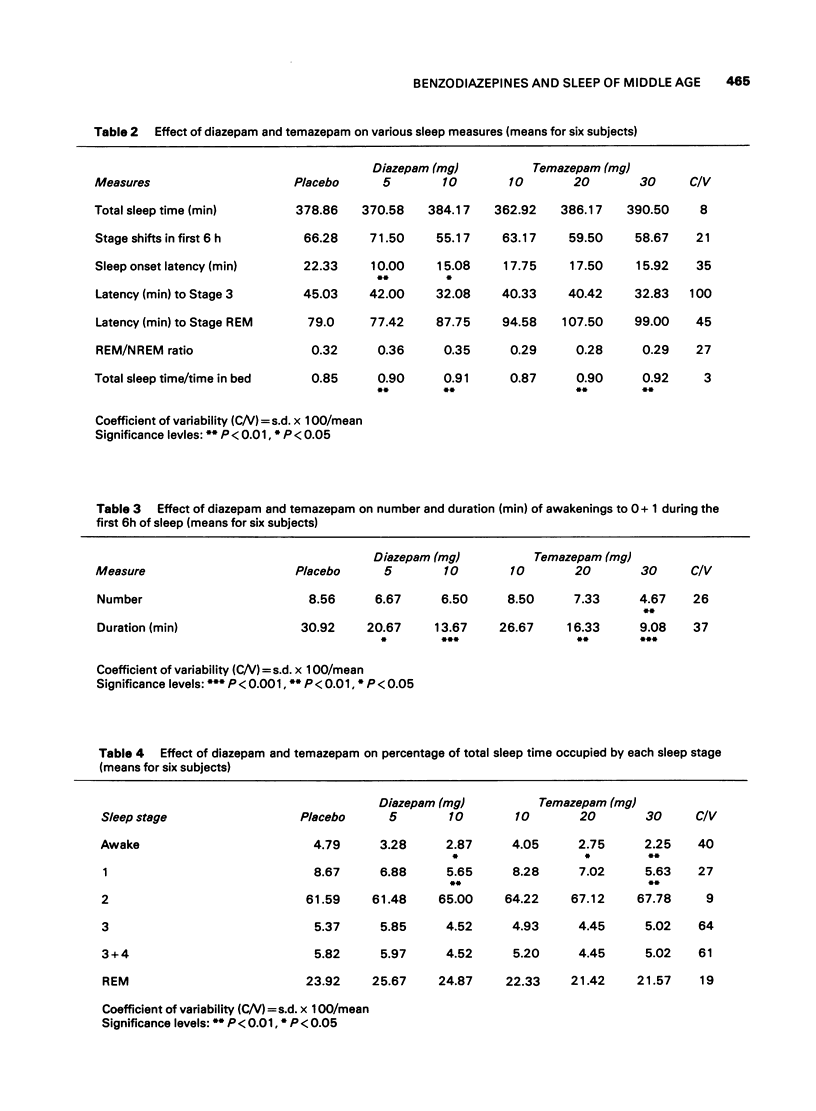
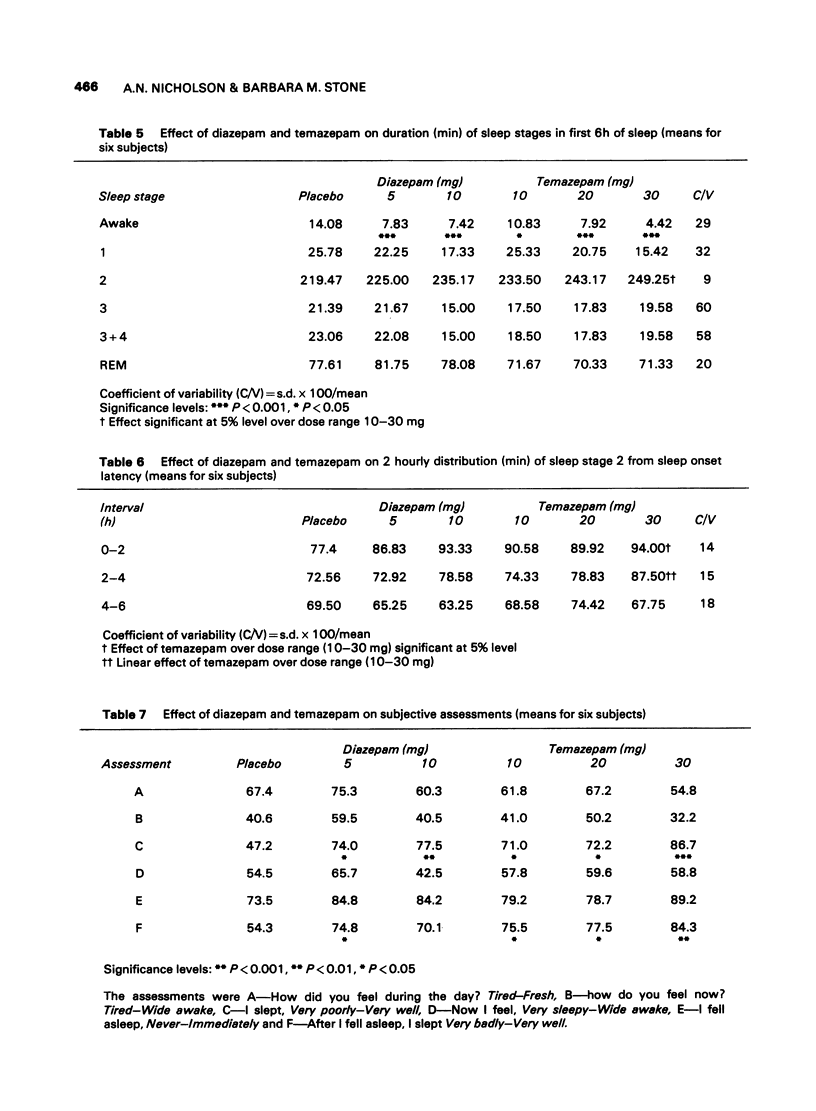
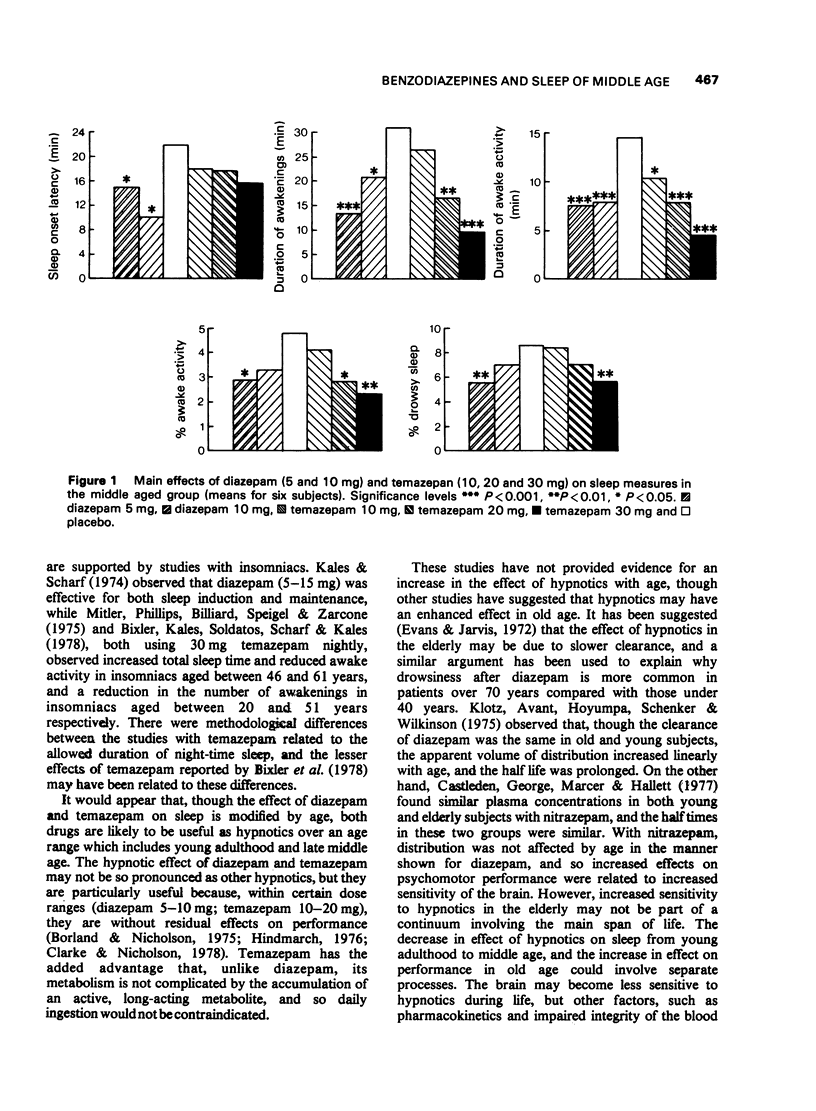
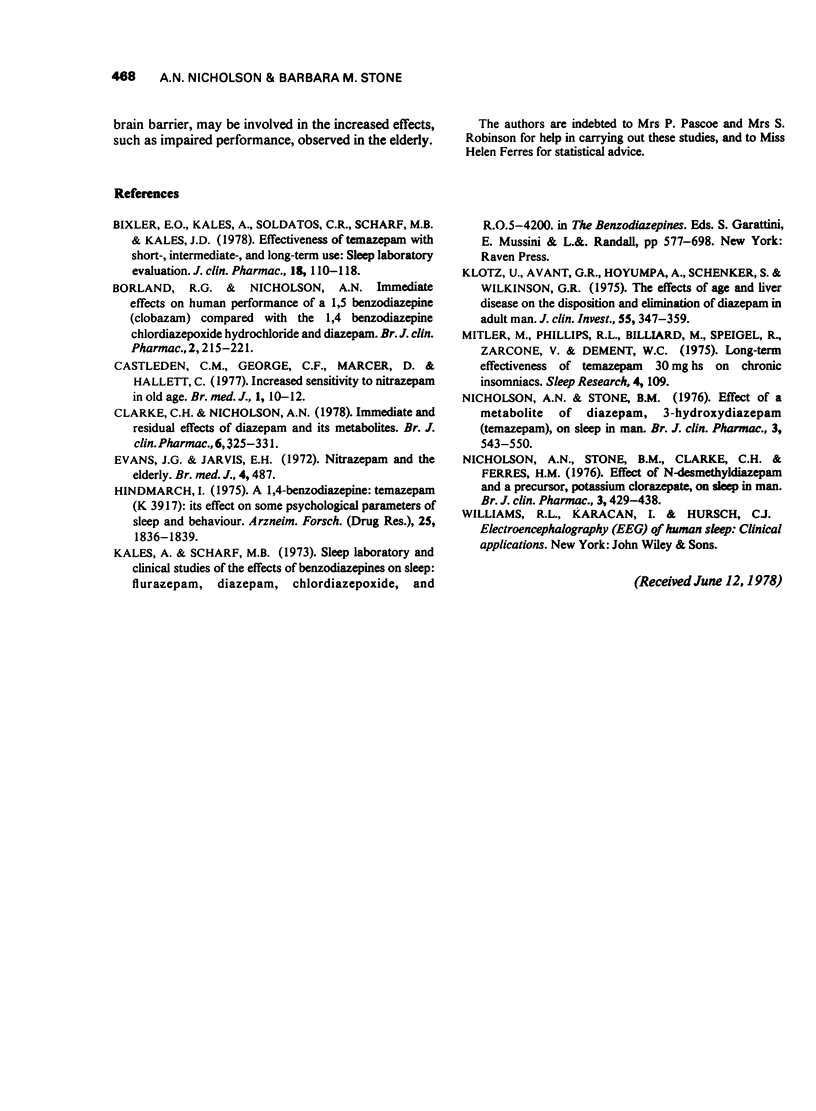
Selected References
These references are in PubMed. This may not be the complete list of references from this article.
- Bixler E. O., Kales A., Soldatos C. R., Scharf M. B., Kales J. D. Effectiveness of temazepam with short-intermediate-, and long-term use: sleep laboratory evaluation. J Clin Pharmacol. 1978 Feb-Mar;18(2-3):110–118. doi: 10.1002/j.1552-4604.1978.tb02430.x. [DOI] [PubMed] [Google Scholar]
- Castleden C. M., George C. F., Marcer D., Hallett C. Increased sensitivity to nitrazepam in old age. Br Med J. 1977 Jan 1;1(6052):10–12. doi: 10.1136/bmj.1.6052.10. [DOI] [PMC free article] [PubMed] [Google Scholar]
- Clarke C. H., Nicholson A. N. Immediate and residual effects in man of the metabolites of diazepam. Br J Clin Pharmacol. 1978 Oct;6(4):325–331. doi: 10.1111/j.1365-2125.1978.tb00859.x. [DOI] [PMC free article] [PubMed] [Google Scholar]
- Evans J. G., Jarvis E. H. Nitrazepam and the elderly. Br Med J. 1972 Nov 25;4(5838):487–487. doi: 10.1136/bmj.4.5838.487-a. [DOI] [PMC free article] [PubMed] [Google Scholar]
- Hindmarch I. A 1,4-benzodiazepine, temazepam (K 3917), its effect on some psychological parameters of sleep and behaviour. Arzneimittelforschung. 1975 Nov;25(11):1836–1839. [PubMed] [Google Scholar]
- Klotz U., Avant G. R., Hoyumpa A., Schenker S., Wilkinson G. R. The effects of age and liver disease on the disposition and elimination of diazepam in adult man. J Clin Invest. 1975 Feb;55(2):347–359. doi: 10.1172/JCI107938. [DOI] [PMC free article] [PubMed] [Google Scholar]
- Nicholson A. N., Stone B. M., Clarke C. H., Ferres H. M. Effect of N-desmethyldiazepam (nordiazepam) and a precursor, potassium clorazepate, on sleep in man. Br J Clin Pharmacol. 1976 Jun;3(3):429–438. [PMC free article] [PubMed] [Google Scholar]


